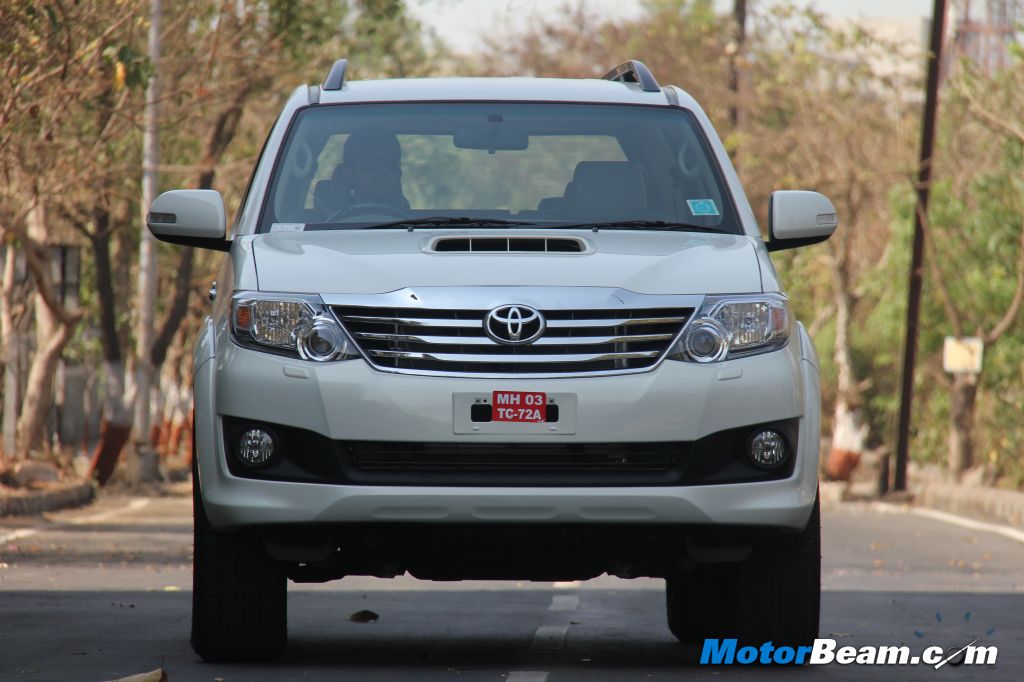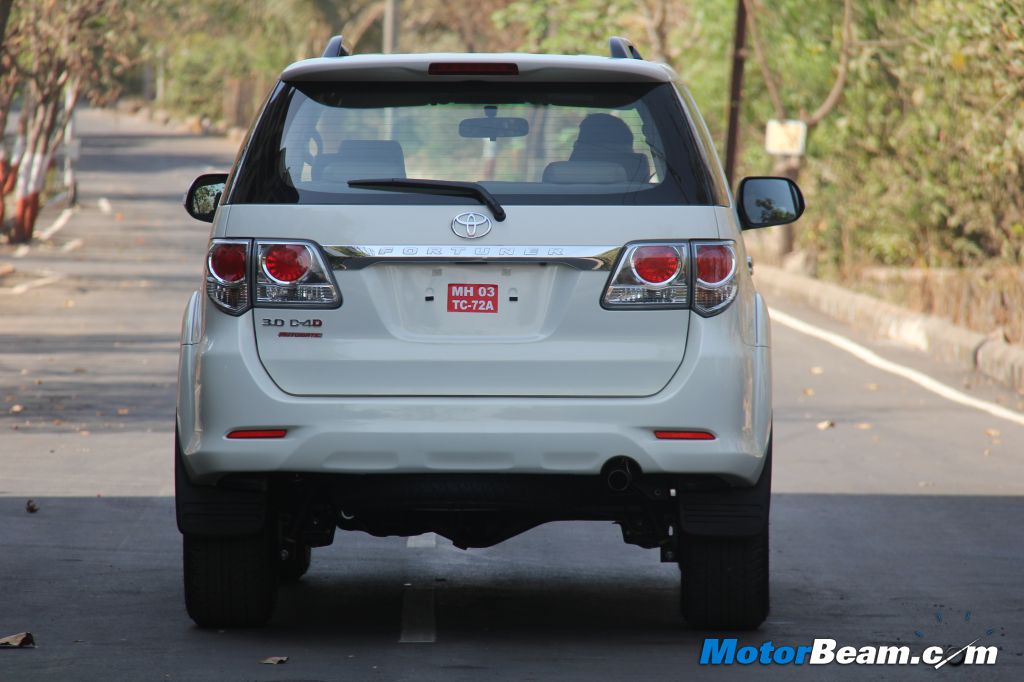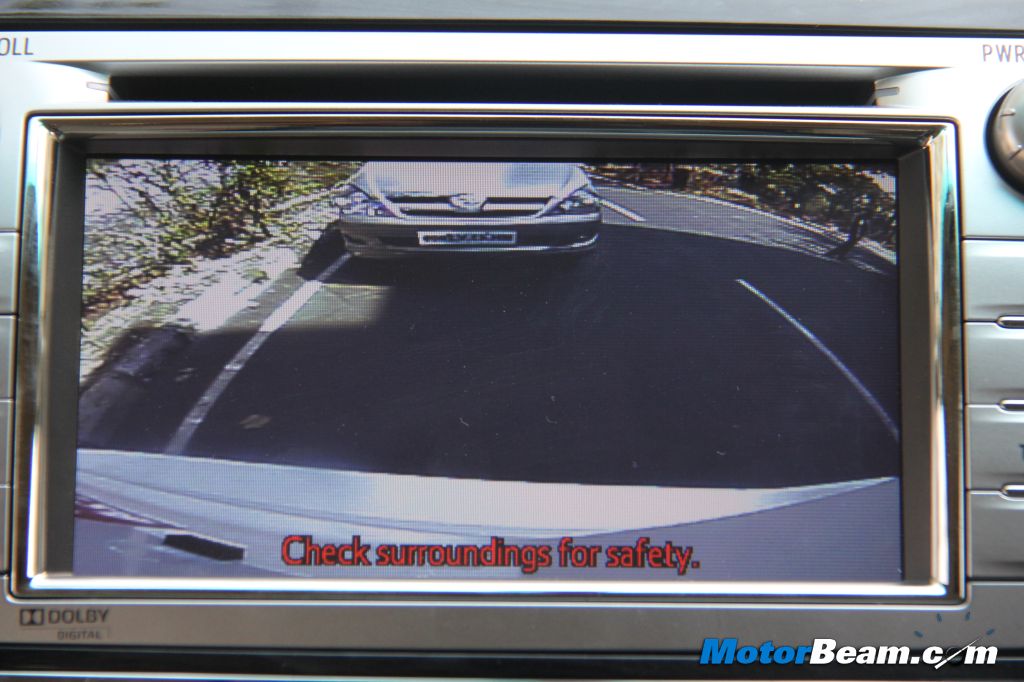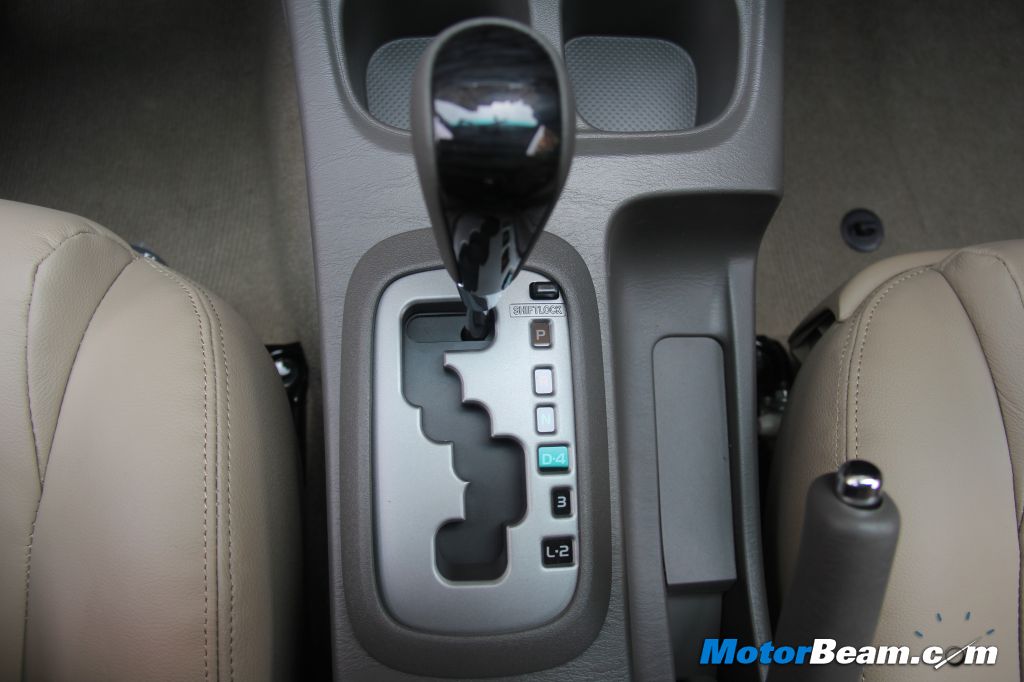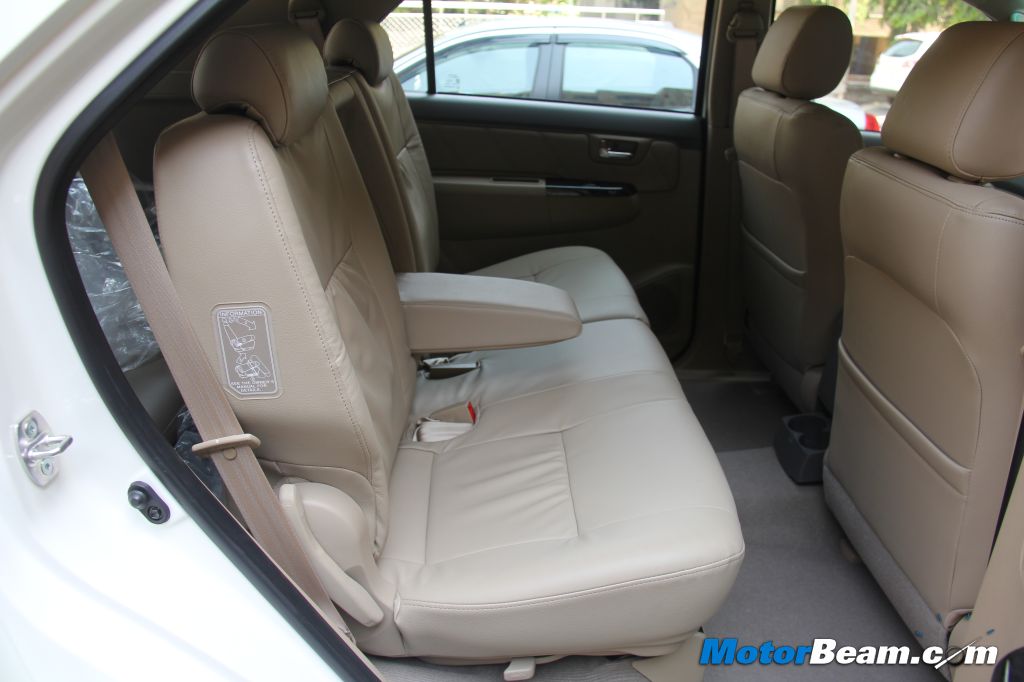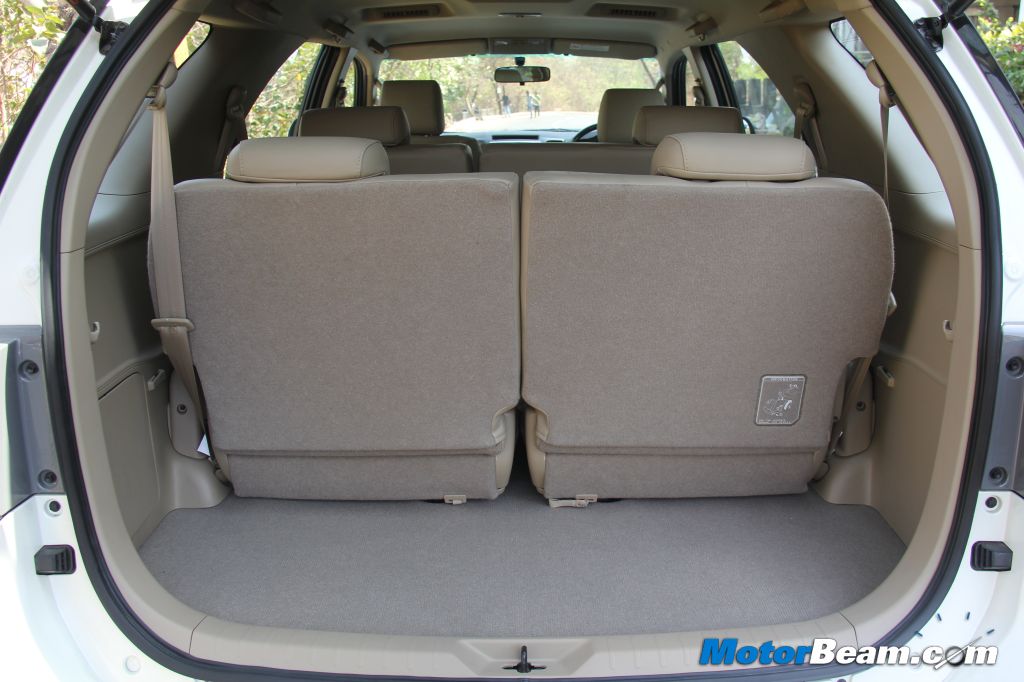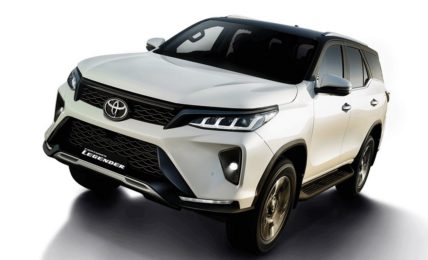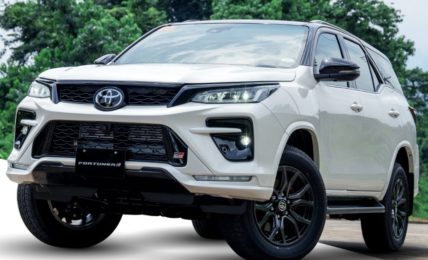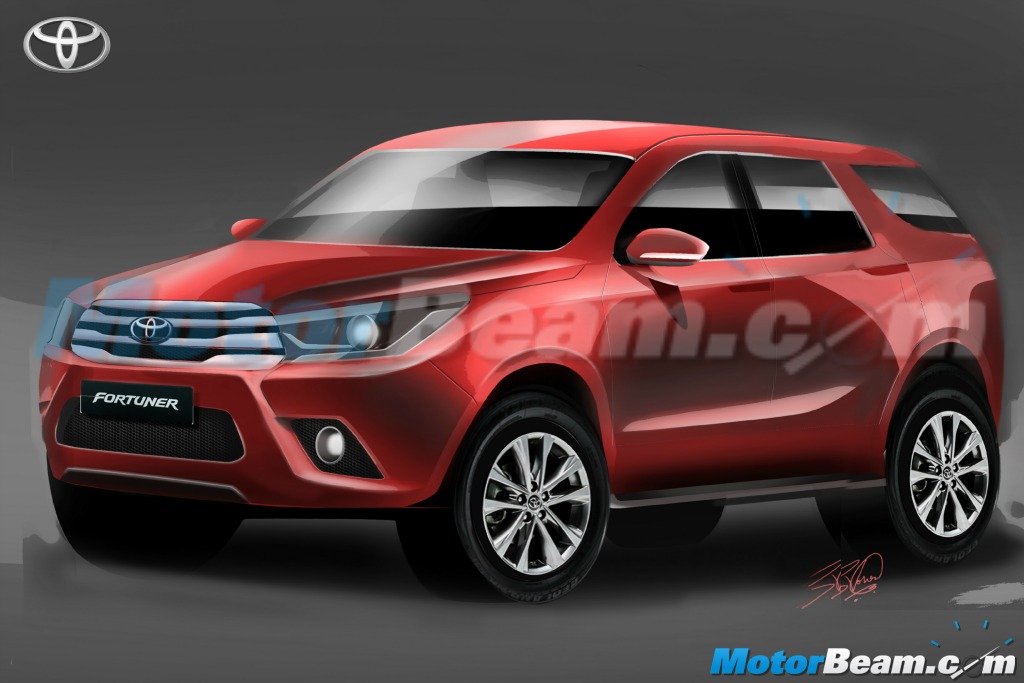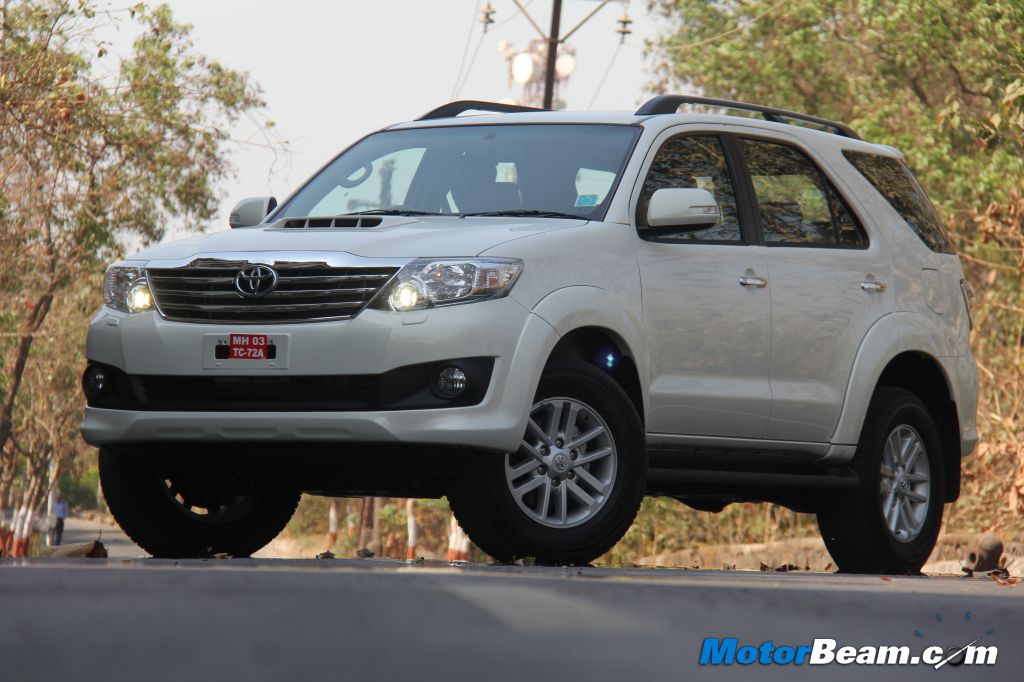
Toyota Fortuner Review
Car Tested: 2013 Toyota Fortuner 5-Speed AT 4×2
Price OTR Mumbai: Rs. 27,26,150/-
The Toyota Fortuner’s imposing stance is enough for people to fall in love with it.
Every company selling a Rs. 20 lakh SUV in India was happy, untill the Toyota Fortuner arrived in 2009. The Fortuner came and in no time it simply conquered the SUV segment. Even Toyota was taken aback by the popularity of this SUV and the company had intially started assembling 500 units a month, through the CKD route. Today, the Toyota Fortuner sells thrice those numbers, with consistent sales of 1500 units a month. That is more than what all other SUVs sell combined together. Heck, that is even more than what the world’s cheapest car sold last month! So what is so special about the Fortuner and why people close their eyes and buy one?
Exteriors – Toyota has hit the sweet spot with the styling of the Fortuner. The vehicle looks every inch an SUV with the macho design having all the right muscle. Toyota facelifted the Fortuner last year and the vehicle seems to have taken quite a few styling elements from its elder siblings, the Prado and Land Cruiser. Some of the highlights on the exteriors of the Toyota Fortuner include the chrome treatment on the front grille, high ground clearance, hood scoop, roof rails, flared wheel arches and generous dimensions. The Fortuner is even bigger than the Prado, which costs almost twice the price!
[flickr size=”center” float=”medium”]http://www.flickr.com/photos/motorbeam/8550917341/[/flickr]
Look closely and you will notice Toyota’s understated approach in the details. The use of chrome has been done in the right doses to give that premium feeling appreciated largely by Indians. The front and rear lights have good detailing and offer excellent illumination too. Unlike most Toyota’s, the Fortuner is one vehicle which is immediately noticed on the road. The butch styling of the Toyota Fortuner ensures that other fellow road users are immediately perturbed by this SUV’s massive girth. The Fortuner can thus be a lesson of how an SUV should really look, it is simply having the right design ingredients, which makes it so popular in our country.
[flickr size=”center” float=”medium”]http://www.flickr.com/photos/motorbeam/8552023424/[/flickr]
Interiors – Step inside and I have a deja vu moment, after all I have been regularly driving the Innova since the last five years. Yes, the Fortuner does feel a lot like the Innova from the inside but there are a few differences which set it apart. You do sit higher in the Toyota Fortuner and the AC vents and centre console are quite different too. Other than that, you get a very functional interior with high quality materials which will easily stand the test of time. The two-tone dashboard looks good and there are plenty of storage spaces inside the cabin.
The steering wheel comes from the Camry and although slightly big in size, it feels good to hold. The use of piano black wood inserts on the dashboard is neat and not in the eyes like the light brown wood inserts in the old Toyota Fortuner. However the silver finish around the audio system is not very soothing and doesn’t blend well with other colours of the dashboard. Equipment levels are generous with a reverse parking camera, double-DIN audio system (with Bluetooth connectivity), cruise control, electrically adjustable driver’s seat, leather seats, HID headlights with washer, multi-information display and the likes. The Optitron Combimeter has illumination control making the instrument cluster a breeze to read at all times.
The air-conditioner chills in an instant but we don’t like the placement of the switch which activates the rear blowers. The Toyota Fortuner offers good comfort for front passengers with the right bit of padding to ensure long drivers are tireless. Getting in and out is easy too thanks to the running board and holding handles placed near every door. The vehicle is a 7-seater and the second row offers very good legroom and thigh support but lacks on the headroom front. The last row lacks legroom though and is best suited for kids. The boot is decently big and can carry two large suitcases without having to drop the last row of seats.
[flickr size=”center” float=”medium”]http://www.flickr.com/photos/motorbeam/8552021700/[/flickr]
Performance – The Fortuner’s 3.0-litre diesel engine pumps out 171 PS of power and 343 Nm of torque. The automatic variant matches up with the manual in terms of performance as it is offered with 2-wheel drive only. Thus the Fortuner 2WD AT variant weighs slightly less than its 4WD sibling and also churns out slightly more torque of 360 Nm. With all that torque produced between 1400-3200 RPM, the Toyota Fortuner feels effortless and moves quite quickly, without giving the driver any hint of the SUV’s weight. It’s only past 3200 RPM when power starts to trail off, otherwise the Fortuner does have loads of performance on tap and one simply needs to tap the accelerator to get moving fast.
[flickr size=”center” float=”medium”]http://www.flickr.com/photos/motorbeam/8552017930/[/flickr]
The Fortuner’s gearing is quite tall which helps in improving highway cruising. The motor although a bit loud at high revs, feels comfortable cruising all day long at 120 km/hr without breaking into a sweat. The Fortuner is offered with 5-speed manual and automatic transmissions. Toyota recently updated the Fortuner with a 5-speed automatic gearbox and earlier it used a 4-speed unit. One can choose between 2, 3, 4, L modes on the gearbox to take control of things. The new 5-speed autobox has close ratios and cogs shift quite smoothly. Mind you, this gearbox isin’t the quickest in shifting gears but it does excel when it comes to driveability and overall performance. It is the best way to enjoy the Fortuner in a relaxed manner.
[flickr size=”center” float=”medium”]http://www.flickr.com/photos/motorbeam/8552016872/[/flickr]
Driving Dynamics – The Toyota Fortuner does have immense presence on the roads but the dynamics fail to live up to our expectations. While handling is decent, with a fair bit of body roll, the steering doesn’t feel as direct and is devoid of feel. However the light steering makes it easy to manoeuvre this copious SUV in crowded city conditions. The high centre of gravity doesn’t help matters and the Fortuner is not the vehicle you will want to push through corners, it is simply not meant for that. But the high seating does have its advantages and one has a commanding view of the road.
[flickr size=”center” float=”medium”]http://www.flickr.com/photos/motorbeam/8552025016/[/flickr]
The Toyota Fortuner doesn’t excel in the ride quality department either, with low speed ride being quite stiff, resulting in a choppy ride under 40 km/hr. As speeds build up, the Fortuner does feel better over bad roads and absorbs them without transferring much to the occupants. It also feels more settled on the road as you go faster. High speed stability is decent although you never feel glued to the ground due to the top heavy nature. Many had complained about poor brakes on the old Fortuner and Toyota had updated the brakes of the SUV in 2010. The new version has good stopping power with good pedal bite, resulting in quick and smooth deceleration.
[flickr size=”center” float=”medium”]http://www.flickr.com/photos/motorbeam/8550917415/[/flickr]
Verdict – The addition of a 5-speed gearbox for the automatic variant has improved performance, resulting in the vehicle becoming all the more practical. However the Toyota Fortuner does have its fair share of shortcomings and now the competition has become more intese with the arrival of the SsangYong Rexton. While the Fortuner doesn’t excel in all areas, it does do decently in most. But where it matters, the Fortuner comes out on top, offering tremendous exterior appeal and above average dynamics. Factor in the legendary Toyota reliability and quality, and you know why the Fortuner is so popular in its segment.
Toyota quality, immense street presence and generous interior room is enough to keep the Fortuner gunning at the top of the sales chart.
[flickr size=”center” float=”medium”]http://www.flickr.com/photos/motorbeam/8550914389/[/flickr]
What’s Cool
* SUV appeal
* Toyota quality
* Commanding driver view
What’s Not So Cool
* Stiff ride quality at low speeds
[flickr size=”center” float=”medium”]http://www.flickr.com/photos/motorbeam/8552025300/[/flickr]
2013 Toyota Fortuner Specifications
* Engine: 2982cc, 16-valve, DOHC, D-4D, with intercooler
* Power: 171 PS @ 3600 RPM
* Torque: 343 Nm @ 1400-3200 RPM, 360 Nm @ 1400-3200 RPM (2WD AT)
* Transmission: 5-speed manual, 5-speed automatic
* Top Speed: 185 km/hr
* 0-100 km/h: 12 seconds
* Fuel Consumption: 8-9 km/l (City), 10-12 km/l (highway)
* Fuel Type: Diesel
* Suspension: Double Wishbone (Front), 4-Link with Lateral Rod (Rear)
* Tyres: 265/65/17 Tubeless Radials
* Brakes: Ventilated Disc / Leading-Trailing Drum
* Safety: ABS, EBD, VCS, Dual Airbags, Reverse Parking Camera
2013 Toyota Fortuner Dimensions
* Overall length x width x height: 4705 mm X 1840 mm X 1850 mm
* Wheelbase: 2750 mm
* Front/Rear Track: 1540/1540 mm
* Ground clearance: 220 mm
* Turning Radius: 5.6-metres (2WD), 5.9-metres (4WD)
* Boot Volume: 296-litres
* Fuel Tank Capacity: 80-litres
* Kerb Weight: 1885 kgs (2WD), 1970 kgs (4WD)
Read The SsangYong Rexton Review


